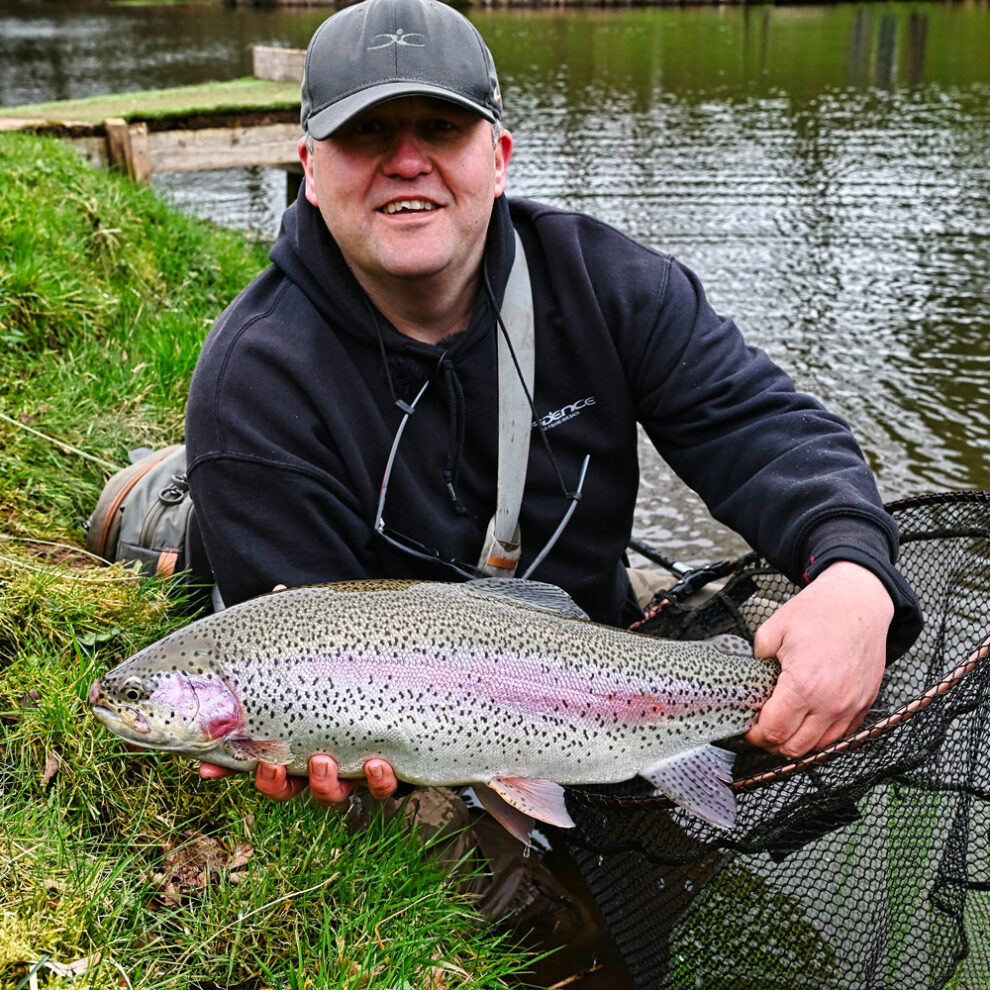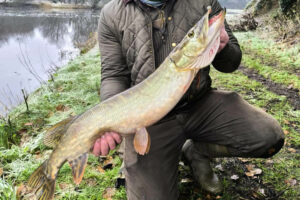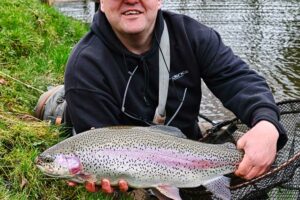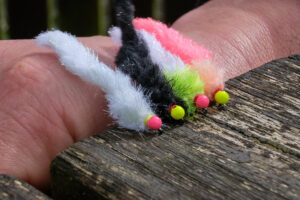Money saving suggestions to keep you on the bank. OK, so I originally wrote this for you Cadence Fly Anglers out there, having read it back though, I see that a lot of these tips are perfect for everyday anglers too! So if you’re a coarse or a specimen angler, ignore the bits about fly fishing, this is still relevant to you!
This one could be over quickly by just saying wear loads of warm clothes and a waterproof coat, but it’s not that simple if you want to keep your range of movement and feel.
Here’s a step-by-step guide with a few money saving ideas that might make your next trip in winter a bit more bearable.
The first thing to say is there will be some days that you just can’t protect yourself fully from the cold. Combinations of strong wind, rain, or snow and minus temperatures are a pretty potent force. And the nature of fly fishing means you will have exposed hands to handle line, so none of this comes with a guarantee.
But you can improve it.
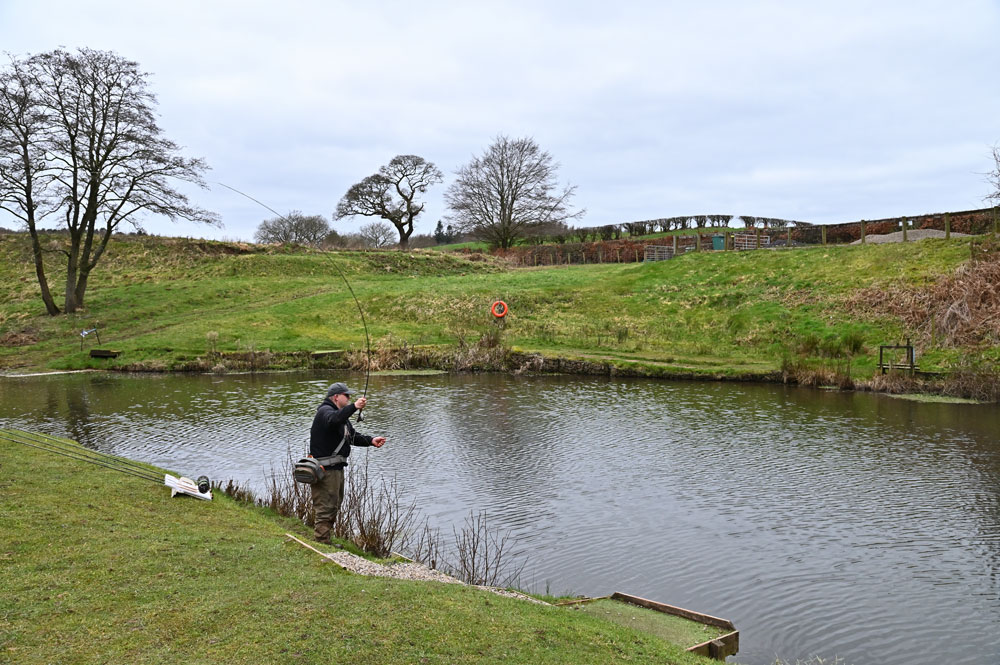
Gloves and hand warmers
Of course, you can’t use proper outdoor gloves when retrieving line, detecting takes or playing fish. Fingerless ones give some hope, but the gloves are still bulky and tend to get in the way. So we’ve mostly learnt that we get cold hands and work around it with well-timed warming breaks.
Maybe not if you try disposable vinyl gloves. Cheap as chips, dead simple and don’t take up much space.
They are by no means perfect, but they are the nearest thing I’ve come across to provide some protection – while maintaining some hand and finger dexterity.
You may have to try different sizes and types to find the perfect ones for your hands, but I would err towards slightly tight-fitting. Loose and baggy isn’t so good. But too tight and they can split easily.
And here’s the other thing with disposables. You can pull the rubber fingers off you use for retrieving. And leave the other ones covered. I pull off the two thumb side fingers and the thumb itself.
You can also use the gloves to insert a small hand warmer. I owe this tip to another Cadence Ambassador, Riggers, on the Coarse Fishing side. He even sent a video clip to clarify. Top man is Riggers!
Basically, you push the hand warmer up the inside of the wrist of the glove and leave it there. The thinking being that is where the blood flow is closest to the skin, so the blood can pick up the warmth as it travels past. It will also emit a bit of heat into the glove itself.
For this, you would use the smaller type of disposable hand warmer – Riggers recommends Little Hotties.
I will also have a much bigger hand warmer in a coat pocket to get a hold of when moving spots. This can be an XL disposable type, or a rechargeable one.
The rechargeable ones weigh a bit more, but can have several uses beyond hand warming. They can double up as emergency phone chargers and torches as well. Among other jobs. They’re definitely worth looking at.
Base layer and mid-Layer
I think this is where people pay the least attention to keeping warm, but it’s crucial and can cost buttons if you follow this suggestion.
A look around fishing catalogues will tell you breathability is key. And it is.
If you have layers that let sweat work away from your body, you will stop the skin getting damp and therefore cold. Breathability is everything for keeping your core – and therefore the rest of your body warm on winter trips. It’s not a sales story. It genuinely works.
The problem comes when you see the cost of these layers. Magic though they are, getting the full set up from a fly-fishing shop can cost hundreds.
So I just use running clobber.
Start with the base layer. And go for the compression type. Maybe a size bigger than what you are used to. And it must be long sleeved. It will feel strange to start with, but you get used to it and then stop noticing it.
A word of warning: Unless you are a chiselled athlete, you might want to avoid parading round in public with one of these on. They aren’t flattering. But they work and can be hidden away. I tend to avoid looking in the mirror, but wouldn’t be without mine for fishing.
Next, get a light mid-layer – and for this, I use long sleeved running shirts. They’re brilliant. Super thin, breathable, unobtrusive but keep heat between layers. You might even want to consider wearing two and ditch the woolly jumper. If you follow one tip in this whole blog, it’s to buy a long sleeved running shirt. Your freedom of movement is far higher than the thicker stuff, and they keep you warm when worn as a team with other stuff. To confirm, they won’t keep you warm when just worn by themselves.
For the base layer and running shirt, you should be able to buy both for a total of £20-£30 off Amazon or any of the outdoor retail park emporiums. Obviously, there are fancier versions available as well, but a basic own brand will do nicely for fishing.
On middling cold winter days, I will just have two running shirts under my coat, but if it’s brass monkeys and windy, I’ll put a thin fleece on under the coat.
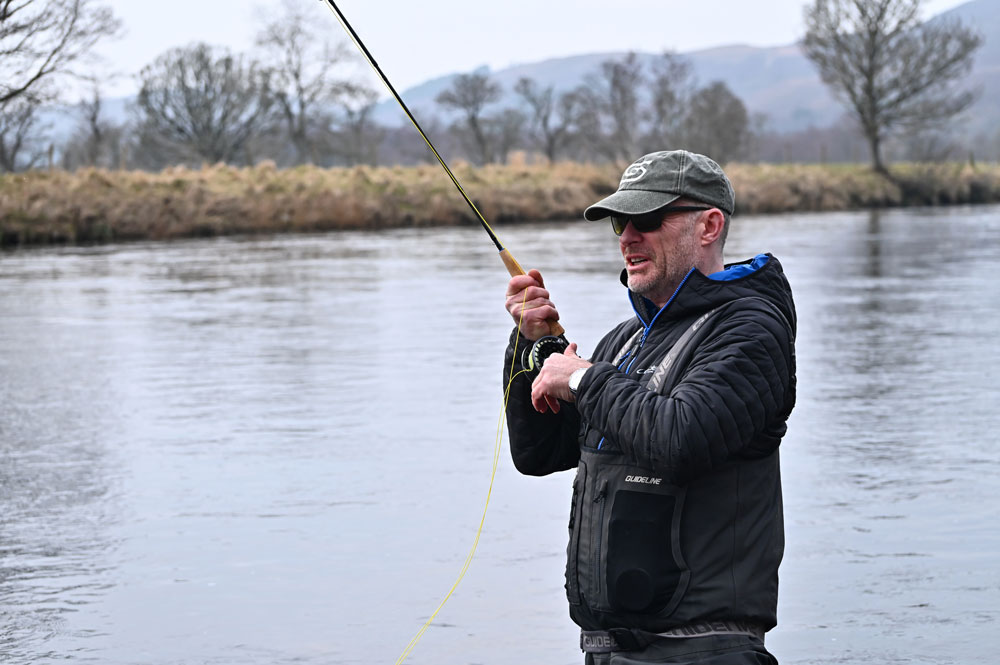
Coat
You’re obviously going to need a coat to put over the top of these layers. And while there are some brilliant ones available, I have a little checklist when buying one for fly fishing.
- As waterproof as physically possible. Obviously.
- Breathable – not the old-fashioned waxed type, which keeps the rain out but the sweat in.
- As few pockets on the front of the coat as possible to stop fly line hanging up. Ideally, pockets that are enclosed. Minimalistic is the word here.
- A fully attached hood. Not a clip on hood you wheel out when it rains. Maybe the latter is OK in the summer to cover you for showers, but a clip on hood has gaps. And gaps let wind in. For winter fishing, the aim is to seal off any gaps, and an in-built hood does that perfectly.
- The hood should also have a peak and be able to house a cap underneath. A hood without a cap underneath will mean more rain will hit your face. The peak of the cap gives an extra few inches of protection. The cap also stops the hood falling over your eyes.
- Sensible wrist seals. Have a try of the coat to check, these aren’t a pain to fasten. And also check they don’t stick up all over, cos these things are magnets for fly lines. Especially using double-handed rods.
- Short length coat – to allow wading without pockets dipping in the water.
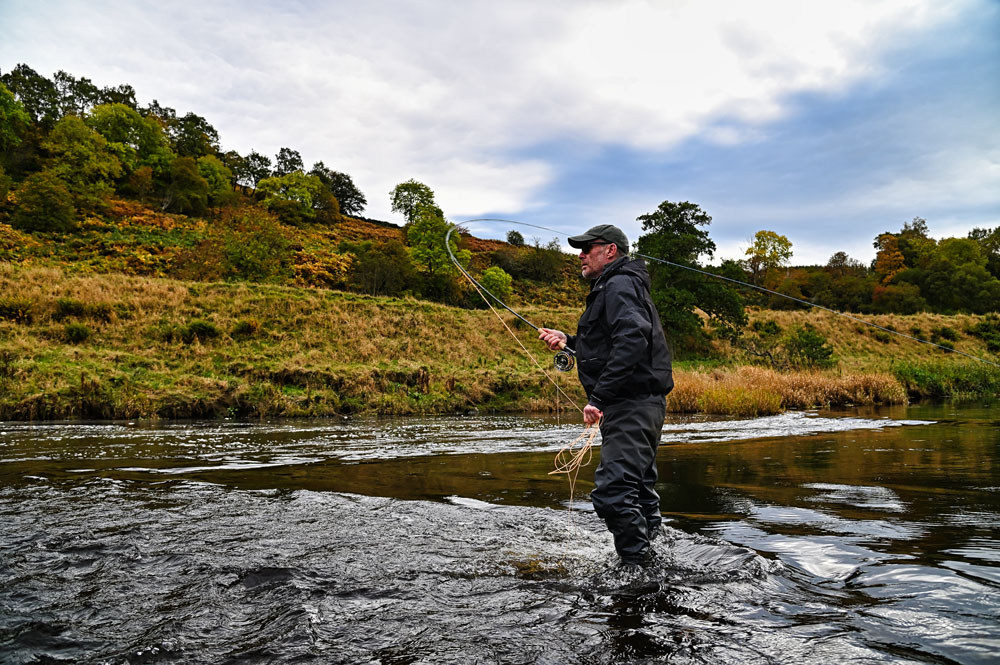
Chest waders/bib and braces
An absolute essential for winter fishing for several reasons.
They eliminate the join between trousers and shirt where the wind gets in. That’s a lot of cold air denied access.
They are fully waterproof and take away the need for waterproof trousers. The obvious benefit is they keep the rain completely off below jacket level. But they also mean you can sit down on wet banks.
For fishing trout in small waters, wading generally isn’t allowed, so I use my battered old chest waders from river fishing. A few leaks here and there aren’t an issue if you aren’t going plodding, so they get a new lease of life on the lakes.
You can spend eye-watering amounts of money on chest waders. But for the purposes of keeping warm and dry, pretty much any will do.
Neoprene’s will certainly keep you warm, but you will sweat buckets underneath. They are certainly good value for money, though, but aren’t breathable and use sheer thickness to keep you warm. You will also carry around a neoprene-specific stench as well. Horses for courses.
Bib and Braces do a very similar job to chest waders and are typically combined with bog-standard wellies. With a clamping seal of the bib and brace around ankle height of the wellie.
These generally cost a fair bit less than chest waders and do a similar job, but you would rather not wade in them, and they can create more fly line hang up points. But they still do the main jobs of being impermeable to rain and wind.
For winter fishing, one of these two is an essential for me.
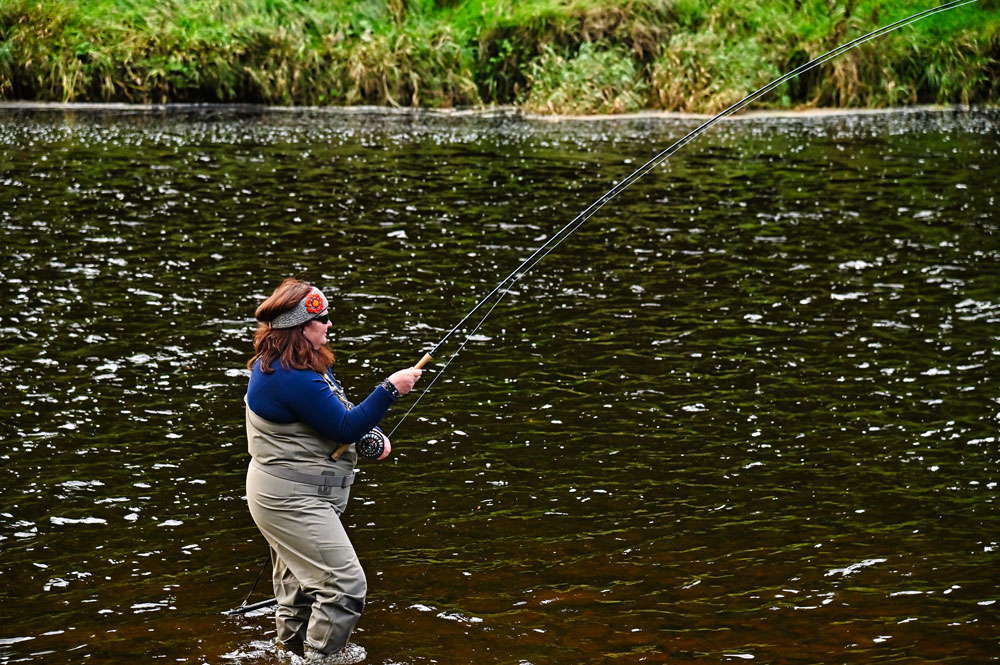
Trousers
We’ll keep this one nice and short.
Don’t wear jeans or tracksuit bottoms.
They soak up any moisture in the form of sweat or rain and don’t dry quickly at all. They are guaranteed to make you colder than you could be.
Once again, breathability is the key word. And we’re back at the retail parks again. Just buy a pair of breathable walking trousers.
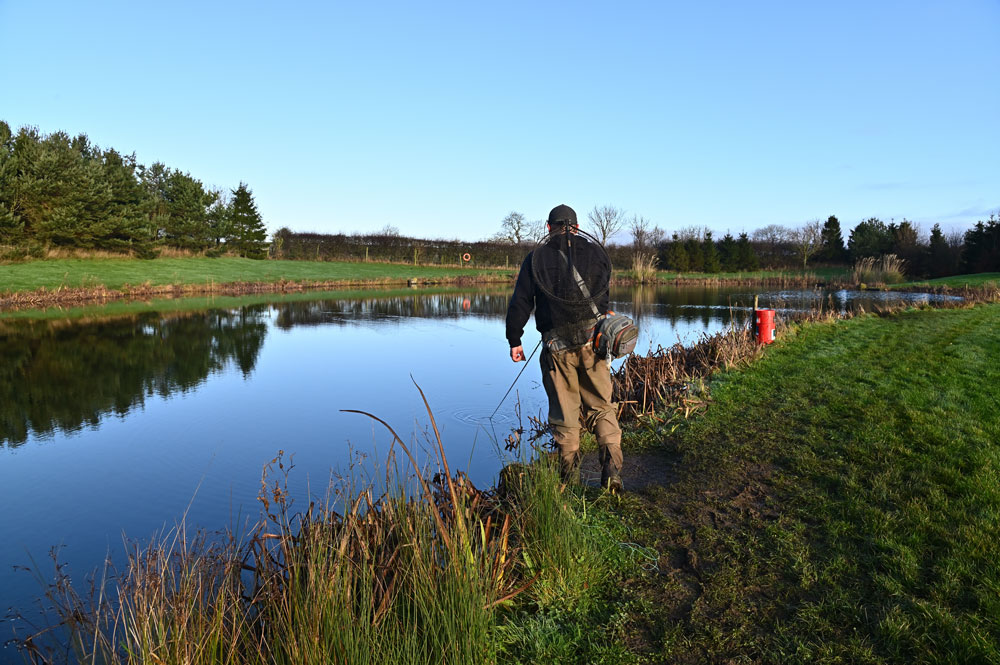
Socks
Once again, back at the retail parks to buy a pair of coolmax base layer socks. Same job as everything above. They pull the sweat off your skin and pass it onto the next layer. For which I just wear a normal pair of everyday socks, but you can wheel out the big thick’uns here as well. As long as you’ve got the thin breathables underneath.
Balaclavas/scarfs
There are many anglers who like a scarf or some kind of hanky thing around their neck. Perhaps not for me, but I get the idea. I just find them a bit restricting. On absolutely brassic days, I get around the scarf to a degree with a balaclava. The lower part of which tends to behave a bit like a scarf anyway.
Just like everything above, a thinner base layer balaclava is best with a slightly thicker one over, but maybe we’re getting a little carried away here and just a single balaclava will do the job? It’s just I found an online shop specialising in outdoor clothes that has these crazy imperfect sales and I got the pair for nearly nothing. Alongside a whole load of other stuff.
The absolute top and bottom is you can really help yourself keep warm with a bit of thought and not necessarily spending a lot of money.
Summary
As a very basic rule, avoid clothes that would take a long time to dry. Wear clothes that would dry quickly.
Wear several thin layers rather than one thick one, and believe the hype about breathability. Pop along to the local retail park and buy some exercise garb.
Seal off any entry points for the wind.
Winter fishing is the best weather for rainbows in the UK, so don’t avoid it because you get cold too easily. Hopefully, these ideas help.

